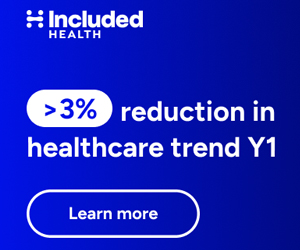 In August of 2009, Sarah Palin claimed that the health legislation being crafted by Democrats at the time would create a “death panel,” in which government bureaucrats would decide whether disabled and elderly patients are “worthy of healthcare.” Despite being debunked by fact-checkers and mainstream media outlets, this myth has persisted, with almost half of Americans stating recently that they believe the Affordable Care Act (ACA) creates such a panel.
In August of 2009, Sarah Palin claimed that the health legislation being crafted by Democrats at the time would create a “death panel,” in which government bureaucrats would decide whether disabled and elderly patients are “worthy of healthcare.” Despite being debunked by fact-checkers and mainstream media outlets, this myth has persisted, with almost half of Americans stating recently that they believe the Affordable Care Act (ACA) creates such a panel.
The death panel myth killed neither the ACA nor Obama’s reelection bid. But persistence of this myth could threaten the Obama administration’s efforts to implement the law, because many of its most controversial features are scheduled to be implemented over the next few years. Why is the death panel myth so hard to shake and why is its persistence relevant to the unfolding of Obamacare?
In part, the myth is hard to shake because most people have a very poor understanding of the complex law. The ACA tries to increase access to health insurance through a bewildering combination of Medicaid expansions, private insurance subsidies, health insurance exchanges, and the infamous health insurance mandate. It attempts to improve healthcare quality through things such as reimbursement reforms and promotion of electronic medical records. And it encourages the formation of more efficient healthcare organizations, with inscrutable names like “accountable care organizations” and “medical homes”.
The myth is also likely to persist because the law calls for the establishment of a 15 person committee– the independent payment advisory board (or IPAB)–which is given the job of recommending cost-saving measures to the Secretary of Health and Human Services if Medicare expenses rise too quickly. The IPAB will consist of independent healthcare experts who are forbidden, by law, from proposing changes that will affect Medicare coverage or quality.

 The passage of the Affordable Care Act (Obamacare) and the reelection of President Obama was cause for real hope among those in pursuit of the Holy Grail in medicine: higher quality at lower cost. However, with the passage of what is called the Breast Density Bill in several states, the quality cost equation seems doomed on both ends. The Affordable Care Act mandates coverage of screening mammograms, without co-pay or deductible, but the Breast Density Bill is destined to push utilization of “non-beneficial” imaging, ie imaging that does not clearly save lives, even further.
The passage of the Affordable Care Act (Obamacare) and the reelection of President Obama was cause for real hope among those in pursuit of the Holy Grail in medicine: higher quality at lower cost. However, with the passage of what is called the Breast Density Bill in several states, the quality cost equation seems doomed on both ends. The Affordable Care Act mandates coverage of screening mammograms, without co-pay or deductible, but the Breast Density Bill is destined to push utilization of “non-beneficial” imaging, ie imaging that does not clearly save lives, even further.
 The history of president Obama’s health reform bears an uncanny and disturbing similarity to the life cycle of a hurricane. With Sandy fresh in our memory, the similarity is not comforting.
The history of president Obama’s health reform bears an uncanny and disturbing similarity to the life cycle of a hurricane. With Sandy fresh in our memory, the similarity is not comforting.


 In 2009, Rick Scott founded Conservatives for Patients’ Rights, a health care pressure group opposed to President Obama’s health reforms.
In 2009, Rick Scott founded Conservatives for Patients’ Rights, a health care pressure group opposed to President Obama’s health reforms.
 So I read
So I read 









